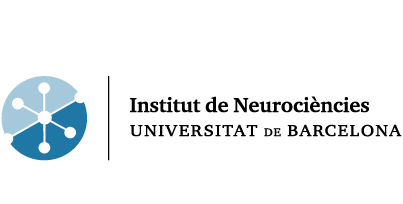CARLES SOLSONA
Position: Full Professor
(Catedràtic d’Universitat)
Contact details
Prof. Carles Solsona
Department of Pathology and Experimental Therapeutics
Faculty of Medicine, Feixa Llarga s/n
08907 L’Hospitalet de Llobregat (Spain)
+34 934 02 42 79
solsona (at) ub.edu
Research Interests
Our laboratory of Cellular and Molecular Neurobiology has a long tradition in the use of toxins, especially neurotoxins, for the study of cell and tissue processes related to regulated secretion (neurotransmitters, hormones) as well as in the molecular basis of neurodegenerative neurological diseases, such as Amyotrophic Lateral Sclerosis or Charcot-Marie-Tooth. Our lab take advantage of the acquired experience in both areas, to elucidate possible causes of a neuroinflammatory demyelinating disease such as multiple sclerosis (MS). Recently it has been suggested that epsilon toxin (Etx) from Clostridium perfringens may be a trigger agent of this disease. The toxin has the ability to cross the blood brain barrier, access the interior of the nervous system and bind to myelin. Also recently, it has been described the presence of antibodies against the inwardly rectifying potassium channel Kir 4.1 in sera from EM patients, pointing to this channel as one of the key elements in the progression and possible seed of the disease, and the role of the myelin and lymphocyte protein (MAL) in the intoxication pathway of Etx. Neither of these observations is devoid of controversy and studies that affirm, deny or clarify these observations are still required. Our aims to provide new results on both subjects related to MS, based on the observation of pilot experiments performed in our laboratory showing the colocalization of Etx with Kir 4.1 and also MAL in experimental models. The results obtained will help in the design of new therapeutic tools for the prevention and treatment of MS, as well as for the generation of molecular tools that help us understand the mechanism of action of Etx, in particularly its ability to permeabilize the blood-brain barrier, and to be used as a molecular carrier to the central nervous system.
Current Research Lines
- Amyotrophic Lateral Sclerosis (ALS) and neurodegenerative diseases
- Purinergic signaling in nerve cells
- Synaptic communication
- Multiple Sclerosis
Technologies/methods
- Cellular electrophysiology: Extracelluar recordings, Two Electrode Voltage Clamp, Amperometry, Patch-clamp.
- ATP detection by luciferine-luciferase.
Highlighted publications
· Cases M, Llobet A, Terni B, Gómez de Aranda I, Blanch M, Doohan B, Revill A, Brown AM, Blasi J, Solsona C. Acute Effect of Pore-Forming Clostridium perfringens ε-Toxin on Compound Action Potentials of Optic Nerve of Mouse. eNeuro. 2017 Aug 10;4(4). pii: ENEURO.0051-17.2017. doi:10.1523/ENEURO.0051-17.2017.
· Álvarez-Zaldiernas C, Lu J, Zheng Y, Yang H, Blasi J, Solsona C, Holmgren A. Cellular Redox Systems Impact the Aggregation of Cu,Zn Superoxide Dismutase Linked to Familial myotrophic Lateral Sclerosis. J Biol Chem. 2016 Aug 12;291(33):17197-208. doi: 10.1074/jbc.M115.708230
· Solsona C, Kahn TB, Badilla CL, Álvarez-Zaldiernas C, Blasi J, Fernandez JM, Alegre-Cebollada J. (2014). Altered thiol chemistry in human amyotrophic lateral sclerosis-linked mutants of superoxide dismutase 1. J Biol Chem. 26;289(39):26722-32.
· Nualart-Marti A, del Molino EM, Grandes X, Bahima L, Martin-Satué M, Puchal R, Fasciani I, González-Nieto D, Ziganshin B, Llobet A, Barrio LC, Solsona C. Role of connexin 32 hemichannels in the release of ATP from peripheral nerves. Glia. 2013 Dec;61(12):1976-89.
· Nualart-Marti A, Solsona C, Fields RD. (2013) Gap junction communication in myelinating glia. Biochim Biophys Acta. 1828(1):69-78.



